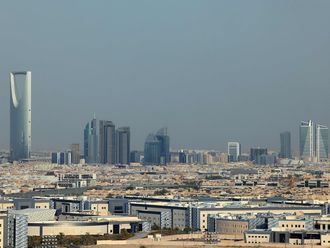For those familiar with the phrase, it wasn’t ‘different this time’, strangely enough, for the UAE’s stock markets in June, as data for the month as a whole demonstrated. The felling of Dubai’s index especially, having risen precipitously, would have been a chastening experience to those sucked into the momentum trade, although July so far has seen a modest rebound.
Consolidation may well be the name of the game now, in the coinciding Ramadan and summer periods. Of course, there’s always the risk of international news of some kind prompting an unavoidable breakout as well in the local arena, but clearly many will prefer to stay on the sidelines until a clearer picture emerges, even while the regional economy seems to power on, according to record PMI data.
The Gulf’s markets might even be providing an advance warning signal for global trends, where risks are rising and concern about that growing. Analysts increasingly acknowledge that, while the music is playing and there remains a strong temptation to keep dancing, proceedings could easily be called to a juddering halt pretty soon.
It begs the question: have the region’s stock indices potentially become a leading indicator, by virtue of their sensitivity to the shifting tides of investor sentiment, in an international environment where a simple theme (that of massive liquidity stimulus) has pervaded the upturn since the global financial crisis?
Historically, of course, the reverse has been the case, as emerging markets have responded to overseas mood swings, being marginal plays among international funds flows.
Yet, in recent years it has become fairly commonplace for the bellwether markets in the West to react badly to heavy declines in Shanghai, for instance, as the world’s centre of economic gravity migrates gradually to Asia. Thus, other regions may have spillover effects reversing the previous direction of transmission from developed to developing markets. Bloomberg broadcast market specialists recently surmising that US investors had decided to dump US stocks that day in response to market weakness in the Gulf, as Dubai’s retreat from its recent peak intensified.
Academic research into the correlation and responsiveness of regional vis-à-vis international markets offers mixed views.
A 2009 study, for instance, found that the GCC appears to behave like the world’s most established markets, virtually mirroring US performance. It also showed a disproportionate appetite for high-beta (particularly volatile) stocks during a recovery period, i.e. investors in the Gulf on the lookout for outsized returns.
Another paper, from 2012, however, assessed that the US’s S&P 500 index had minimal impact of the volatility of GCC indices, implying that internal factors (domestic business conditions) dominate over external comparisons in immediate trend dynamics.
Either way, it’s clear enough that surveys of fund managers during the spring were right to deduce that the bull run in the UAE was overheating, and it was time to turn a touch bearish in asset allocation for an interim.
Plausibly, though, now it seems reasonable to be perturbed about the broader canvas again, on which the UAE and Gulf markets have presented a diverting motif.
On the fundamental condition of the world economy, its (only) moderate recovery still has policymakers leaning towards prolonging stimulus, very wary of returning to normalized policy settings. As many currently observe, that stance presents its own dangers of inviting risk-taking just when the moment of having to rein back the state’s artificial support is approaching.
The US Federal Reserve has gone to truly extraordinary lengths to give support to both bond and equity markets, its chair Janet Yellen saying only in the past week that its largesse will continue in the interests of financial stability, even as financial assets move into bubble territory. That alone should set alarm bells ringing.
Indeed, now that the latest, critical US jobs report has produced yet another drop in unemployment, that alarm may sound louder.
There is certainly a legitimate feeling that the Fed, whose stance is so vital to global market sentiment, is leaning unduly with the wind rather than tempering what could easily become a hazardous storm.
Without over-egging the point, it does seem that leading authorities are preoccupied with emphasizing cyclical boom at the expense of the structural underpinnings of economic growth, inviting not only various forms of moral hazard but even greater levels of risk, investment and systemic, than have already transpired.
It might even reach the point where, such is the apparent strengthening of the economy, that the bond market may sell off in anticipation of inflation, whereupon the Fed might on the one hand take the view that higher yields will themselves contain that threat, or alternatively that it has to tighten policy to prevent even further reaction of that kind.
Either way, stocks investors will have something serious to think about, and guard against, and the Gulf’s taking a pause to catch breath looks altogether timely.












